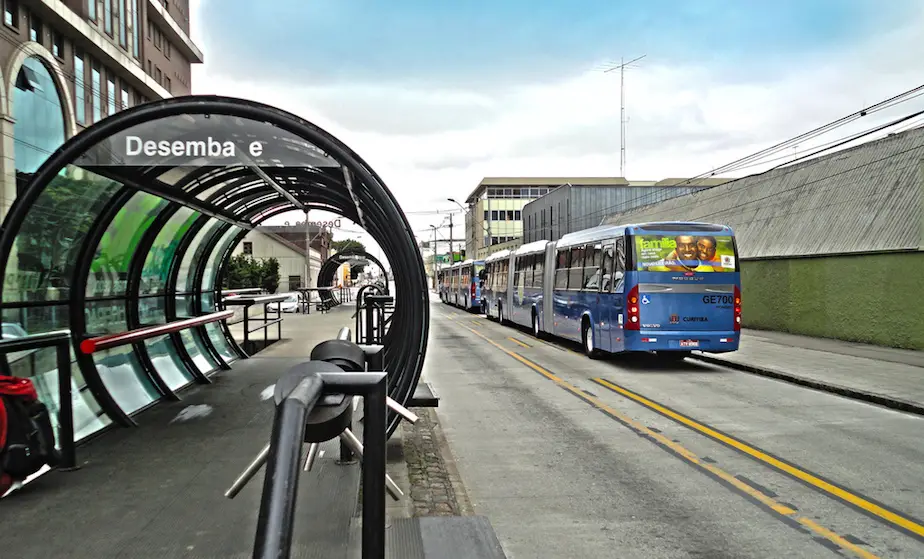It wouldn’t be the first time someone looked at Jeff Bezos as if to say, “There’s no way you can be serious, right?” The founder of Amazon had been met with aggressive skepticism before, with his implementation of massive distribution centers that somehow (few people really know how) make distribution twice as efficient, and his surprising move to buy the Washington Post, which raised a few eyebrows. Only this time, it happened on national television. And this time, Bezos wasn’t just changing his own company, he was potentially changing the cityscape of urban centers across the US, and perhaps one day, the rest of the world.
But Bezos’s plan won’t change the structures or layout of the cities themselves, it will change the skies above them. Bezos is proposing to build a fleet of small robotic eight-motored helicopters – drones – to carry individual packages under five pounds in weight within a 10 mile radius of delivery centers.
There’s no way he can be serious, right? After all, there has been no shortage of unworkable proposals regarding drone delivery systems, including the memorable tacocopter.com. But Bezos is bringing more to the table. On his appearance on 60 Minutes, he showed off a working prototype to host Charlie Rose, along with a convincing-ish demo video of the drone, decked out with the Amazon logo, scooping up a lunch box sized package from a warehouse and whisking it away to a massive house in the suburbs, where it is gratefully received by the well-groomed owner of the house. Maybe Bezos is serious after all.
This vision of pint-sized drones buzzing through urban airspace has created a massive buzz online. First plenty of pushback was generated by the fact that currently, drones are best known as weaponized killing machines used by the US armed forces to rain terror on war torn regions of Afghanistan and Pakistan. A Medium column points out that drones are also currently in use by criminals to smuggle contraband into prisons; New York Times star columnist Maureen Dowd adds that they are also used to sneak pictures of lavish mansions. Regarding Bezos’s “60 minutes” teaser, some have accused Bezos of building this prototype as nothing more than a publicity stunt for Cyber Monday. Finally, College Humor has astutely observed that this may lead to a Matrix-style robot uprising.
But beyond the fear mongering and gossip, there are more legitimate concerns about a possible drone system in operation. Columnist and RC helicopter enthusiast Joshua Ziering highlights the fact that that when you take into account headwinds, the range could drop significantly. The supposedly failsafe eight engine design could still be taken down entirely by electrical shorts. And the fully computerized system, which relies on surface elevation databases, may not have access to a reliable database of power lines and trees. Still, Bezos is optimistic: he thinks the system could be up and running in 5 years.
Are we witnessing the dawn of a brave new dronecopter world? No one is certain, but Bezos’s vision is certainly a lot more plausible than the tacocopter and may yet see the light of day. And who knows? Perhaps upping the number of drone deliveries isn’t a bad thing (provided the drones aren’t equipped with weapons like their wartime counterparts). It means fewer trucks on the street, though how much fewer is unclear; it’s going to take a whole lot of five-pound drone shipments to equal the weight carried by just one two-ton truck.
There are still plenty of hurdles to clear, however. When multiple companies start adding drone systems, how will they coordinate? What about avoiding birds? Or people who try to steal a drone as it lands, to use as a Christmas present for the kids? Most importantly, how is a large scale drone system going to work after it leaves Bezos’s idealized suburban neighborhood and comes to dense urban areas? To avoid smashing into skyscrapers, drones will probably have to be routed over avenues, cutting their range. For deliveries to office buildings, will they land on the roof or at the front door, where they could very easily get pulverized by foot traffic? And for anyone living above the first floor in apartment complexes, the sound of buzzing drones passing by at two in the morning is likely to become really annoying, really fast.
All of these issues remain unsettled, and will potentially be addressed in the US by FAA regulations to be released in 2015. But beyond the purely logistical issues, there’s the question of how this will change how we utilize urban space. Bezos has made it clear that the main goal of this program is for all deliveries weighing five pounds or less (86% of all orders according to Bezos) and within the drone’s range to be delivered within 30 minutes. This isn’t about changing the skies – though it will – it’s about extending the virtual reach of the internet. Once again, physical space seems to lose out against cyberspace.
But far from putting an end to the value of vibrant urban spaces, the rise of drones might actually show us their true value. Let’s not forget that the key to this program’s workability isn’t the drones themselves, it’s the massive warehouses with lots of general purpose items in stock. But what about rare items or items that can’t be mass produced? Drones may one day bring us all our commonplace, five-pound-or-less items, but they can never replicate the physical experience of going shopping for unique hand crafted items, let alone the added cultural benefits of public areas.
We’ll just have to wait for Bezos’s next big announcement for physical space to be made totally irrelevant.
Drew Reed is an online media producer and community activist specialising in sustainable transportation. He lives in Buenos Aires.

